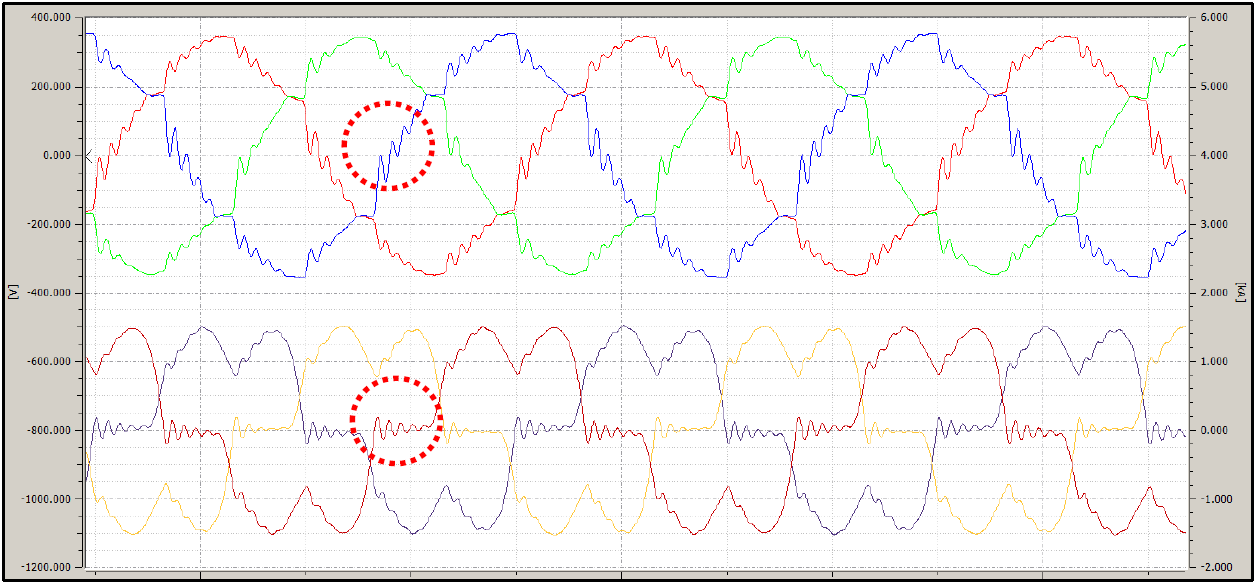Resonance damping with a special active filter
Introduction
After installation of a new photovoltaic system in a low-voltage grid with high amount of drives, frequent failures of the first and larger solar system have been detected. The inverters of both systems switched off with the message "power failure".
A power quality measurement, conducted by the local utility company, was showing temporarily high voltage distortions and exceedances of the limits in accordance with EN 50160 as well as EN 61000-2-2. But the cause was not specified in their report.
As the customer was planning to connect a combined heat and power plant (CHP) in this grid, an increase of failures was expected.
PQP performed a power quality survey in the grid and figured out the cause-effect relationships. Then we planned different solutions and the customer decided for the fastest available solution.
Analysis
First we performed a power quality measurement with a special analyzer, to get an overview of the overall situation of the power supply. With this measurement at the transformer, very high voltage distortions are observed. See the following picture of the voltage and current waveform.

Since it is a customer own grid, we have decided for the evaluation of power quality limits in accordance to EN 61000-2-4 Class 2. Of course other standards like IEC 61000-2-2, G5/4 and IEEE519 can be verified by PQP, too. The limits of EN 61000-2-4 were exceeded by individual harmonics and interharmonics very clear.
In the current and voltage waveforms already two causes are visible. On the one hand, the current shows almost exclusively 6-pulse converters (typical for VFD). And on the other hand a clear resonance oscillation can be seen. Such resonances are very often the cause of failures of sensitive electrical equipment.
The parallel resonance is an interaction of transformer inductance and capacitive components in the low-voltage grid. Usually these capacitors are spread over several systems and therefore not specifically to eliminate. We did some more measurements in this network and identified several feeders that are involved in the resonance. These were mainly lighting systems but also the failed photovoltaic systems themselves. The use of not choked or only weakly choked capacitors is typical for such equipment. Therefore, the faulty plant components are involved in the resonance themselves. In addition the resonance frequency was changing during day and night due to switching of lights.
Only two possible solutions came into consideration. The first one would be an expensive an time consuming reconstruction of the low voltage grids of the plant. In this case, the rectifiers would be separated from the equipment which causes the parallel resonance. The second solution was easier to install and available in short term. Therefore the customer decided for the second solution.
Solution
As a quick fix option, a special active filter was installed and has been parametrized by PQP.
Selection, installation and commissioning was carried out in close collaboration with our customer and the supplier of the filter. Objective was the elimination of resonance effects as the cause of the faults of the solar inverters. It was also the greatest risk of problems with the commissioning of the CHP later on.
The results are clear to see!
Voltage without filter (left picture) and with filter (right picture):


At the time of commissioning, the resonance was much less than during the first measurement. But the special active filter was able to remove the resonance effects completely over a period of two weeks during our verification measurement.
The remaining voltage distortions in the right picture are caused by the frequency converters and contain only slight exceedances of limit values according EN 61000-2-4. They can be reduced below the limits by installation of another filter.
Since filter commissioning, the whole plant, including the CHP, is working without failures.